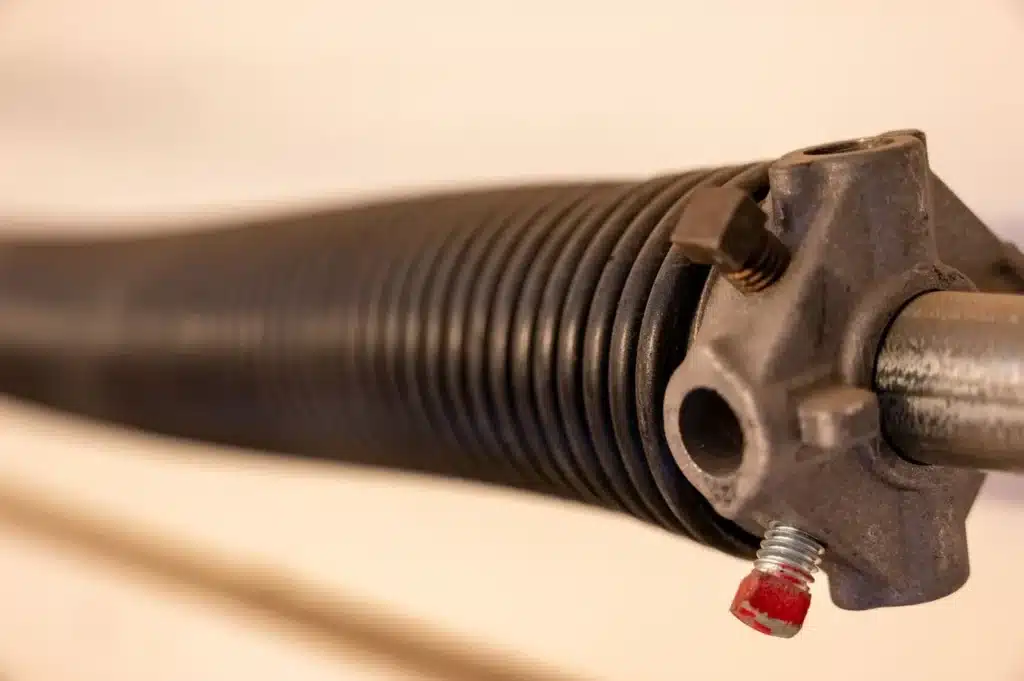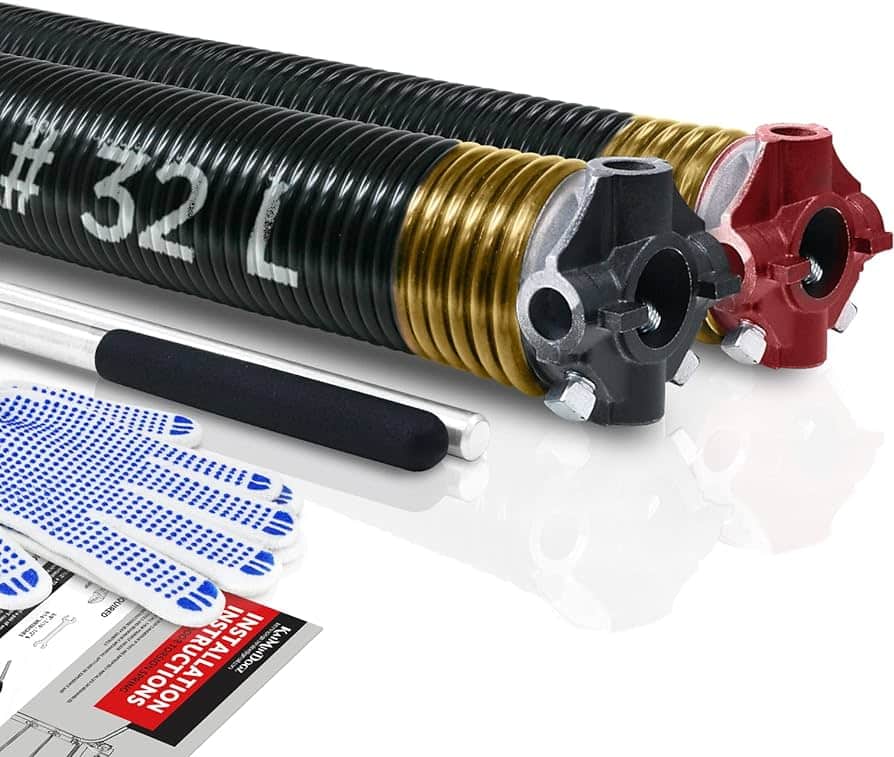Welcome to a guide that simplifies a crucial aspect of garage door maintenance: the Weight Garage Door Spring Size Chart: Best Sizes & Tips 2024. As homeowners, we often overlook the intricate components that ensure the smooth functioning of our garage doors. Yet, understanding the dynamics of garage door springs, particularly their sizing, is paramount for both safety and efficiency.
Garage door springs play a pivotal role in the operation of your garage door, bearing the weight of the door and assisting in its movement. However, selecting the appropriate spring size is not a one-size-fits-all endeavor. It hinges on various factors such as the weight, height, and material of the door, among others. This is where the Weight Garage Door Spring Size Chart: Best Sizes & Tips 2024 becomes indispensable, providing a roadmap to ensure that your garage door operates optimally, smoothly, and safely.
Now, let’s delve deeper into this essential tool and unravel the mysteries of garage door spring sizing.
Understanding Garage Door Springs
Garage door springs are the unsung heroes of our daily routines, quietly facilitating the smooth operation of our garage doors. They counterbalance the weight of the door, essentially acting as the muscles that lift and lower it. Without these springs, the task of manually opening or closing a garage door would be an arduous and potentially dangerous feat.
Imagine trying to lift a heavy garage door without the aid of springs—it would be akin to trying to move a boulder with sheer human strength. The springs store mechanical energy when the door is closed and release it when the door is opened, making the process much more manageable.

Different Types of Garage Door Springs
There are primarily two types of garage door springs: torsion springs and extension springs.
- Torsion Springs: These are mounted above the garage door and utilize torque to lift the door. Torsion springs are known for their durability and ability to provide smoother operation compared to extension springs.
- Extension Springs: These springs are installed on either side of the door and stretch and contract to facilitate movement. While extension springs are more common in older garage door systems, they are still widely used today due to their affordability.
Understanding the type of spring your garage door uses is crucial for selecting the appropriate size and ensuring optimal performance. Now that we’ve explored the fundamentals of garage door springs, let’s delve into the factors that influence their size and selection.
Factors Affecting Garage Door Spring Size
Weight of the Garage Door
The weight of your garage door is perhaps the most critical factor in determining the appropriate spring size. Springs are designed to counterbalance the weight of the door, making it easy to lift and lower. To accurately assess the weight of your door, you can either consult the manufacturer’s specifications or physically measure it using a scale. Keep in mind that heavier doors require stronger springs to support them effectively.
Height and Width of the Door
The dimensions of your garage door also play a significant role in spring selection. Taller and wider doors exert more force on the springs when in motion. As a result, they may require larger or additional springs to provide adequate support. Be sure to take precise measurements of your door’s height and width to ensure compatibility with the chosen springs.
Material of the Door
The material composition of your garage door can impact its weight and, consequently, the required spring size. For example, wooden doors tend to be heavier than their steel or aluminum counterparts. Additionally, insulated doors may have added weight due to the insulation material. Take into account the specific characteristics of your door material when determining the appropriate spring size.
Frequency of Use
The frequency at which you use your garage door can influence the wear and tear on the springs. Doors that are opened and closed multiple times a day will experience more strain on the springs compared to those used infrequently. As a result, you may need to opt for higher-quality springs or more robust spring sizes to withstand the increased demand.
Considering these factors collectively will help you make an informed decision when selecting the right size of garage door springs. Now, let’s explore how to utilize the Weight Garage Door Spring Size Chart effectively to match your specific requirements.
Using the Weight Garage Door Spring Size Chart
How to Determine the Weight of Your Garage Door
Determining the weight of your garage door is a crucial step in selecting the right size of springs. Fortunately, you don’t need specialized equipment to accomplish this task. Here’s a simple method:
- Manual Method: If you don’t have access to the manufacturer’s specifications, you can manually measure the weight of your garage door using a bathroom scale. Start by closing the door and disconnecting the automatic opener. Then, carefully lift the door manually while standing on the scale. The weight displayed on the scale when the door is fully lifted will give you an approximate weight.
- Consult Manufacturer’s Specifications: Many garage door manufacturers provide detailed specifications, including the weight of the door. Check your owner’s manual or visit the manufacturer’s website to find this information.
Interpreting the Size Chart
Once you’ve determined the weight of your garage door, it’s time to consult the Weight Garage Door Spring Size Chart. This chart typically lists various door weights and corresponding spring sizes. Here’s how to interpret it:
- Find Your Door Weight: Locate the weight range that corresponds to your garage door’s weight on the chart. This will help narrow down the appropriate spring sizes for your door.
- Identify Recommended Spring Sizes: The chart will typically list recommended spring sizes or spring specifications based on your door weight. These recommendations are based on industry standards and are designed to provide optimal performance.
Selecting the Appropriate Spring Size
Once you’ve identified the recommended spring sizes for your door weight, it’s time to make a selection. Consider factors such as the type of spring (torsion or extension), compatibility with your garage door system, and any specific requirements or preferences you may have.
If you’re unsure about which spring size to choose, don’t hesitate to seek advice from a professional garage door technician. They can provide personalized recommendations based on your unique situation and ensure that your garage door operates smoothly and safely.
By following these steps and utilizing the Weight Garage Door Spring Size Chart effectively, you can confidently select the appropriate spring size for your garage door, ensuring reliable performance for years to come.

Common Mistakes to Avoid
Overlooking the Importance of Accurate Measurements
One of the most common mistakes homeowners make when dealing with garage door springs is underestimating the importance of accurate measurements. Guessing the weight of your garage door or failing to take precise measurements can lead to the selection of incorrect spring sizes. This can result in poor performance, premature wear and tear, and even safety hazards. Always take the time to measure your garage door accurately or consult manufacturer specifications to ensure that you choose the right size springs.
Neglecting to Consult a Professional
While it may be tempting to tackle garage door spring installation as a DIY project, neglecting to consult a professional can be a costly mistake. Garage door springs are under high tension and can be dangerous to handle without proper training and equipment. Additionally, professionals have the knowledge and experience to assess your specific needs and recommend the appropriate spring sizes for your garage door. Don’t risk injury or damage to your property by attempting to install springs yourself—seek the expertise of a qualified technician instead.
Using Incorrect Tools for Installation
Another common pitfall to avoid is using incorrect tools for spring installation. Garage door springs require specialized tools and equipment for safe and effective installation. Using makeshift tools or attempting to improvise can result in damage to the springs, the door, or even personal injury. Invest in high-quality tools specifically designed for garage door maintenance and installation to ensure that the job is done correctly and safely.
By avoiding these common mistakes, you can ensure that your garage door springs are installed properly and function as intended. Remember, safety should always be your top priority when dealing with garage door components. If you’re unsure about any aspect of spring installation or maintenance, don’t hesitate to seek professional assistance. It’s better to be safe than sorry when it comes to the performance and safety of your garage door system.

FAQs: The Ultimate Guide to Garage Door Springs Answered
How do I measure the weight of my garage door?
To measure the weight of your garage door, you can use a simple method involving a bathroom scale. Begin by closing the door and disconnecting the automatic opener. Then, carefully lift the door manually while standing on the scale. The weight displayed on the scale when the door is fully lifted will give you an approximate weight. Alternatively, consult your garage door’s manufacturer specifications for detailed information on the door’s weight.
What are the consequences of using the wrong spring size?
Using the wrong spring size for your garage door can have several negative consequences. Firstly, it can result in poor performance, causing the door to open and close unevenly or sluggishly. Additionally, incorrect spring sizing can lead to increased wear and tear on other components of the garage door system, potentially leading to costly repairs down the line. Most importantly, using the wrong spring size can compromise safety, as improperly sized springs may not be able to support the weight of the door adequately, posing a risk of sudden failure or injury.
Can I install garage door springs myself?
While it is possible to install garage door springs yourself, it is not recommended for inexperienced individuals. Garage door springs are under high tension and can be dangerous to handle without proper training and equipment. Incorrect installation can lead to serious injury or damage to property. It is best to leave spring installation to trained professionals who have the knowledge and experience to ensure that the job is done safely and correctly.
How often should garage door springs be replaced?
The lifespan of garage door springs can vary depending on factors such as usage, climate, and maintenance. However, as a general guideline, torsion springs typically last around 10,000 cycles, while extension springs may last around 7-9 years. It is recommended to visually inspect your garage door springs regularly for signs of wear and tear, such as fraying or rusting. If you notice any damage or if your garage door begins to operate erratically, it may be time to replace the springs.
Are there any safety precautions to consider when working with garage door springs?
Yes, there are several safety precautions to consider when working with garage door springs. Always disconnect the automatic opener and ensure that the door is fully closed before attempting any maintenance or repairs. Use appropriate safety gear, such as gloves and safety glasses, to protect yourself from injury. Never attempt to adjust or replace garage door springs without proper training and equipment. If you are unsure about any aspect of spring maintenance or repair, seek the assistance of a professional garage door technician. Remember, safety should always be your top priority when working with garage door components.
Conclusion Top of Form
In conclusion, selecting the correct garage door spring size is crucial for ensuring the optimal performance, safety, and longevity of your garage door system. Garage door springs play a vital role in counterbalancing the weight of the door, facilitating smooth operation, and preventing unnecessary strain on other components. By using the appropriate spring size, you can minimize the risk of malfunctions, costly repairs, and safety hazards, providing peace of mind for you and your family.
For homeowners seeking to maintain their garage doors effectively, the Weight Garage Door Spring Size Chart is an invaluable tool. This comprehensive resource provides guidance on selecting the right spring size based on your door’s weight, ensuring compatibility and optimal performance. Whether you’re installing new springs or replacing existing ones, consulting the size chart can help streamline the process and minimize errors.
If you’re eager to delve deeper into the world of garage door maintenance and learn more about spring selection, installation, and maintenance, keep reading. In the following sections, we’ll explore detailed insights and provide answers to common questions about garage door springs. Whether you’re a seasoned DIY enthusiast or a first-time homeowner, there’s always more to discover about keeping your garage door in top-notch condition.
With the right knowledge and resources at your disposal, you can tackle garage door maintenance with confidence, ensuring that your garage door continues to serve you reliably for years to come. Keep reading to unlock the secrets to a smoother, safer, and more efficient garage door operation.



